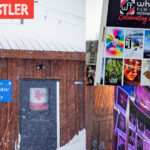When it comes to performance, boots matter more than any other piece of equipment. They are the steering wheel, gas pedal and brake, taking messages from your body movement and telling your skis what to do. The right pair will make you a better skier. The wrong pair will hurt, often literally. Here’s how you should approach buying a new pair of boots.
1. What do you want them to do? There are three types of ski boots: resort, backcountry and hybrid. If you spend all your time inbounds, go with a resort boot optimized for riding lifts and charging runs. The fewer buckles, walk mode and grippy soles of backcountry boots offer more comfort for earning turns. In between are hybrid boots, which descend almost as well as resort boots, but have many of the features of backcountry boots. These are a good option for one boot for both jobs.
2. How stiff a boot do you need? Boot manufacturers use a flex number to measure how stiff a boot is. There is no standard for flex numbers, but in general the higher the number, the harder it is to bend your ankle joint inside the boot. A stiffer boot transfers more power to the ski. And generally the higher the flex, the more features a boot will have. For these reasons skiers often buy a stiffer boot than they actually need. And this is a problem: if you can’t torque your boot, you can’t drive your ski properly. Ability, weight, height, aggressiveness and type of skiing all play into finding your ideal flex number. A good bootfitter can help figure it out. A rough guide goes something like this:
MEN
Below 85: beginner and intermediate skiers, lighter and shorter, slow speeds, groomed snow.
85 to 105: intermediate to advanced skiers and heavier and tall beginners, moderate speeds, mixed conditions.
105 to 120: advanced and lightweight experts, all speeds, all conditions, freestylers.
120 and above: experts, heavy and tall advanced skiers, higher speeds, all conditions, racers.
WOMEN
Below 70: beginner and intermediate skiers, lighter and shorter, slow speeds, groomed snow.
70 to 85: intermediate to advanced skiers and heavier and tall beginners, moderate speeds, mixed conditions.
85 to 100: advanced and lightweight experts, all speeds, all conditions, freestylers.
100 and above: experts, heavy and tall advanced skiers, higher speeds, all conditions, racers.
3. How do you want them to fit? Finding a boot that fits your foot’s unique curves is the most important variable, particularly for comfort and warmth. Knowing the following will make this process easier.
Mondopoint: This is the ski boot equivalent of shoe size. It’s easy to find a conversion chart online and any ski bootfitter will have a scale. Our advice: round down half a size; it’s easier to stretch a slightly small boot, but almost impossible to shrink one that’s too large.
Last: This refers to the width of the mould used to build the ski boot shell and liner. Anything under 100mm is a narrow fit. Wider lasts like 104 are usually all about comfort. Use last as only a guide. With mouldable liners and shells and other ways of manipulating ski boot shape, a good bootfitter can adjust the last to a certain extent. Choose lasts less than 100mm for more performance, and higher than 100 if you prioritize comfort.
Moulding: If you have hard-to-fit feet or want a glove-like feel, pick boots with heat-mouldable liners and shells. And for every boot, add an after-market footbed—it makes a big difference to comfort and performance.
4. How to shop? The number-one piece of advice we can give is to find a good bootfitter. Ask friends and ski buddies or any ski instructor—they always know the best fitters. Shop with lots of time to spare, no distractions and your favourite ski socks.



